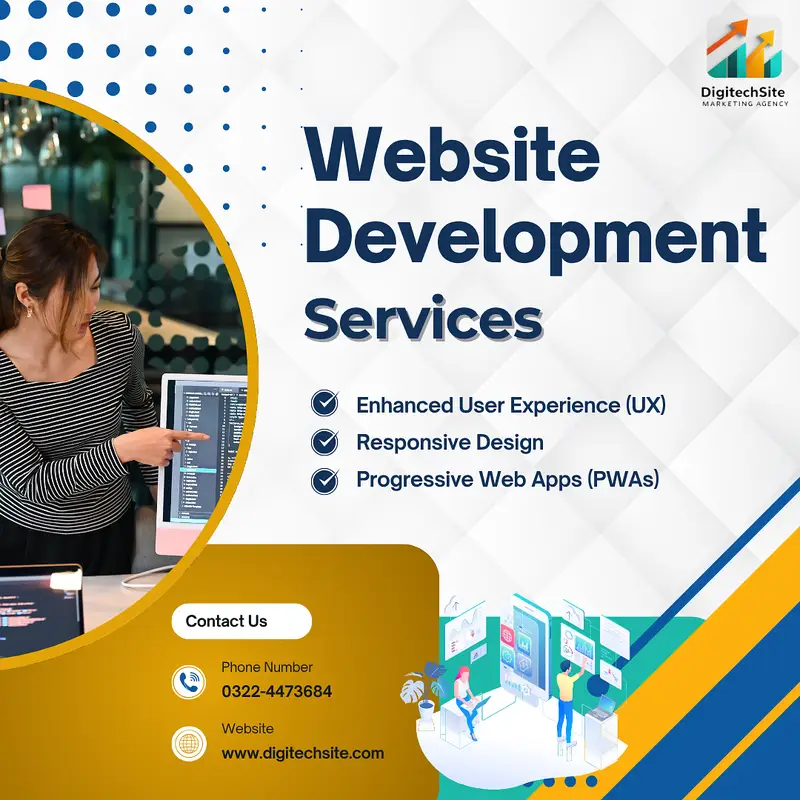From Mockups to Metadata: A Step-by-Step Blueprint for SEO-First Web Development
In the modern digital landscape, building a beautiful website isn’t enough—it has to perform, rank, and deliver meaningful results. Whether you’re crafting a new site or optimizing an existing one with the help of the best site maintenance company, a truly successful web project begins with SEO baked into every stage of development. From the earliest wireframes to post-launch metadata, an SEO-first approach ensures that design, code, and content all work together to achieve visibility, speed, and user satisfaction.
Search engine optimization (SEO) isn’t something you tack on at the end of a web development project—it’s a guiding principle that influences every design and technical decision. An SEO-first workflow blends user experience (UX), technical excellence, and content strategy to create a site that both people and search engines love.
This step-by-step blueprint walks through how to integrate SEO from the first mockup to the final line of code—so you can build websites that don’t just look great, but also rank higher and perform better.
1. Strategy and Discovery: Defining SEO Goals from Day One
Every successful web development project starts with a clear strategy. Before opening a design tool or writing a single line of code, you need to define your SEO objectives and align them with business goals.
Key steps at this stage include:
-
Keyword Research: Identify the phrases your target audience uses to find products or services like yours. This shapes the site’s content hierarchy and URL structure.
-
Competitor Analysis: Examine competing websites to understand their strengths, weaknesses, and ranking strategies.
-
Technical Audit: If it’s a redesign, audit the existing site to identify SEO issues such as broken links, duplicate content, or poor site speed.
-
Goal Setting: Determine key performance indicators (KPIs)—for example, organic traffic growth, bounce rate reduction, or conversion improvements.
The strategy phase ensures that every design and development decision supports measurable SEO outcomes.
2. Wireframes and Mockups: Building UX Around Search Intent
Once goals are established, it’s time to translate them into design concepts. But in SEO-first development, design isn’t just about aesthetics—it’s about functionality aligned with search intent.
Here’s how SEO influences the design stage:
-
Content Hierarchy: Use keyword insights to guide layout structure. Place priority content (such as service or product descriptions) in high-visibility areas.
-
Navigation Planning: Create intuitive menus that reflect your site’s topic hierarchy and improve crawlability.
-
CTA Placement: Strategically position calls-to-action (CTAs) to reduce bounce rates and boost engagement signals.
-
Responsive Design: Ensure mockups are optimized for mobile-first indexing. Google now ranks based on mobile usability, so layouts must be fluid and adaptive.
Design tools like Figma or Adobe XD should incorporate placeholder metadata, alt text, and visual consistency that aligns with the site’s branding and SEO goals.
3. Information Architecture: Structuring for Humans and Crawlers
Information architecture (IA) defines how content is categorized and connected—a foundational element of SEO. A strong IA supports both user navigation and search engine crawling.
Best practices include:
-
Flat Structure: Keep critical pages within three clicks from the homepage.
-
Logical URL Patterns: Use descriptive, keyword-rich URLs (e.g.,
/services/web-developmentinstead of/page?id=45). -
Internal Linking: Plan links between related pages to distribute authority and guide users deeper into the site.
-
Breadcrumb Navigation: Helps both users and search engines understand page hierarchy.
A well-structured IA ensures every page has a clear purpose and path, boosting visibility and discoverability across search results.
4. Development Stage: Writing SEO-Friendly Code
When moving from mockups to actual code, developers must prioritize clean, efficient, and SEO-compliant markup. Every technical choice impacts site performance, crawlability, and ranking potential.
Essential SEO-focused coding practices:
-
Semantic HTML: Use proper tags (
<header>,<main>,<article>,<footer>) to help search engines interpret content accurately. -
Title and Meta Tags: Each page should have unique titles and descriptions that include target keywords.
-
Schema Markup: Implement structured data to help search engines display rich snippets (e.g., reviews, products, FAQs).
-
Canonical Tags: Prevent duplicate content issues by signaling preferred URLs.
-
Robots.txt and XML Sitemap: Configure them correctly to guide crawlers and improve indexing efficiency.
Developers should test each build phase using Google’s Lighthouse or PageSpeed Insights to ensure fast load times and mobile responsiveness—both critical SEO factors.
5. Content Integration: Writing for Users and Algorithms
Content is still king—but only when optimized properly. During development, integrate high-quality, keyword-rich, and user-focused content directly into the site’s structure.
Key considerations:
-
Keyword Placement: Incorporate keywords naturally in headings (H1, H2) and body text. Avoid over-optimization.
-
Readability: Use short paragraphs, bullet points, and engaging visuals to improve dwell time.
-
Internal Linking: Link relevant pages together to strengthen topical authority.
-
Multimedia Optimization: Include compressed images and videos with descriptive alt text to enhance both UX and SEO.
Remember, Google now rewards helpful content—so prioritize clarity, intent, and value over keyword stuffing.
6. Performance Optimization: Speed and Core Web Vitals
Fast websites rank better and convert more effectively. Core Web Vitals—metrics like Largest Contentful Paint (LCP), First Input Delay (FID), and Cumulative Layout Shift (CLS)—are now key ranking factors.
To optimize performance:
-
Minify CSS, JavaScript, and HTML.
-
Use Lazy Loading for off-screen images.
-
Enable Browser Caching to reduce load times for repeat visitors.
-
Implement a CDN (Content Delivery Network) for global content distribution.
-
Optimize Server Response Times by using reliable hosting and lightweight frameworks.
Every second of delay impacts both rankings and revenue—so performance testing should be part of every deployment.
7. Mobile Optimization: Designing for the Mobile-First Web
With over 60% of searches coming from mobile devices, Google’s mobile-first indexing means the mobile version of your site determines how it ranks. Developers must design mobile interfaces that are not only responsive but also optimized for performance and usability.
Best mobile SEO practices:
-
Responsive Layouts: Ensure consistent design across all screen sizes.
-
Readable Fonts: Use legible font sizes and spacing for easy reading.
-
Tap-Friendly Buttons: Design buttons and forms for touch navigation.
-
Avoid Intrusive Popups: Ensure overlays don’t block critical content.
Testing tools like Google’s Mobile-Friendly Test help verify compliance and uncover usability issues before launch.
8. Accessibility: SEO’s Overlooked Partner
Accessibility isn’t just about inclusivity—it also strengthens SEO. Search engines reward sites that are easy to navigate and understand.
Key accessibility-SEO integrations:
-
Add alt text for images.
-
Use ARIA labels for navigation and interactive elements.
-
Maintain high color contrast ratios for text.
-
Provide keyboard navigation support.
These features make your website more usable for everyone while helping search engines better interpret your content.
9. Pre-Launch SEO Checklist: Testing and Validation
Before going live, a comprehensive SEO audit ensures that all technical and content elements are fully optimized. This is the stage where minor details can make a major difference.
Pre-launch SEO checklist:
-
✅ Check meta titles, descriptions, and header tags.
-
✅ Verify robots.txt and XML sitemaps.
-
✅ Test site speed and Core Web Vitals.
-
✅ Ensure all internal and external links work.
-
✅ Implement 301 redirects for any URL changes.
-
✅ Test schema markup with Google’s Rich Results Test.
Performing these checks pre-launch prevents costly issues that could harm rankings post-deployment.
10. Post-Launch Optimization: Monitoring and Continuous Improvement
SEO doesn’t end after launch—it’s an ongoing process. Post-launch activities ensure your site remains optimized as algorithms, competitors, and user behaviors evolve.
Key post-launch practices:
-
Analytics Tracking: Use Google Analytics and Search Console to monitor traffic, crawl stats, and keyword performance.
-
Error Monitoring: Track 404s, server errors, and broken links.
-
Content Updates: Refresh pages regularly with new information to maintain relevance.
-
Link Building: Strengthen domain authority through guest posts, outreach, and digital PR.
-
Technical Maintenance: Regularly update CMS plugins, fix security vulnerabilities, and optimize new assets.
SEO success depends on consistency. Sites that are frequently updated, tested, and improved perform significantly better over time.
11. Metadata Mastery: The Finishing Touch of Optimization
Metadata is the invisible layer that ties your content, structure, and performance together. Well-crafted metadata enhances visibility, click-through rates (CTR), and contextual understanding.
Important metadata elements include:
-
Title Tags: Concise, keyword-rich, and unique for every page.
-
Meta Descriptions: Persuasive summaries that encourage clicks in search results.
-
Open Graph Tags: Optimize how your content appears when shared on social media.
-
Alt Text: Descriptive labels that improve image SEO and accessibility.
-
Schema Markup: Adds structured data that enhances how your listings appear (stars, prices, etc.).
Metadata might be invisible to users, but it’s essential to search engines—and it can be the deciding factor between page one and page two.
12. The Future of SEO-First Development
As search algorithms become more sophisticated, SEO-first web development will increasingly depend on automation, AI insights, and real-time analytics. Tools that analyze Core Web Vitals, predict ranking potential, and optimize code on the fly are transforming how developers approach SEO.
Future-ready developers will focus on:
-
Headless CMS structures for faster performance.
-
AI-assisted keyword and UX design.
-
Voice search optimization.
-
Sustainability and energy-efficient hosting (Green SEO).
By staying agile and data-driven, developers can ensure that every new build or redesign is equipped to thrive in the evolving digital landscape.
Conclusion: Building for Performance, Visibility, and Growth
An SEO-first web development process ensures that your website doesn’t just look impressive—it performs impressively. From mockups to metadata, every stage is an opportunity to improve visibility, user engagement, and conversion potential.
By aligning design, development, and SEO from the start, you create a powerful foundation for long-term digital success.
The result? A website that’s fast, user-friendly, technically sound, and primed to dominate search rankings.
Because in the world of modern web development, great design might catch attention—but great SEO keeps it.



